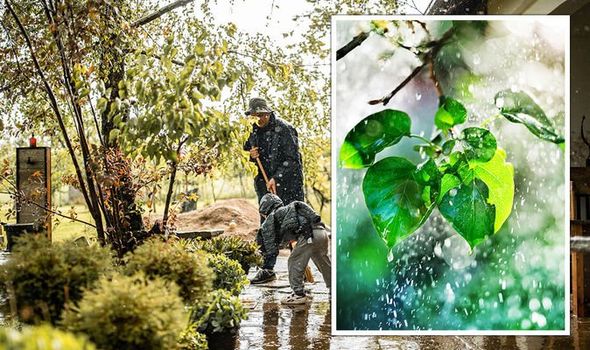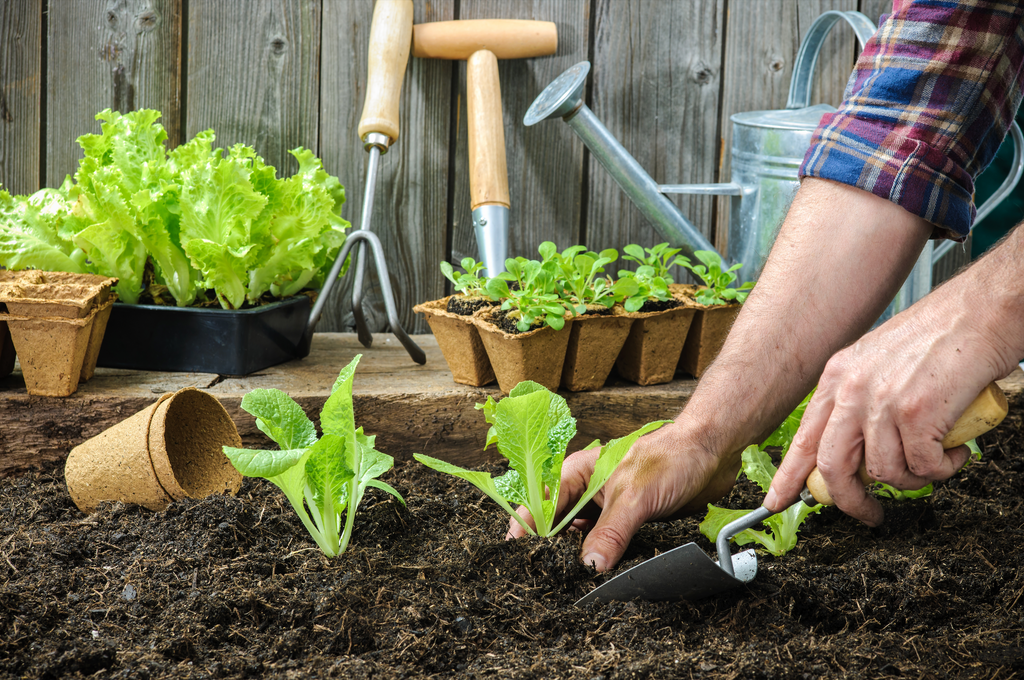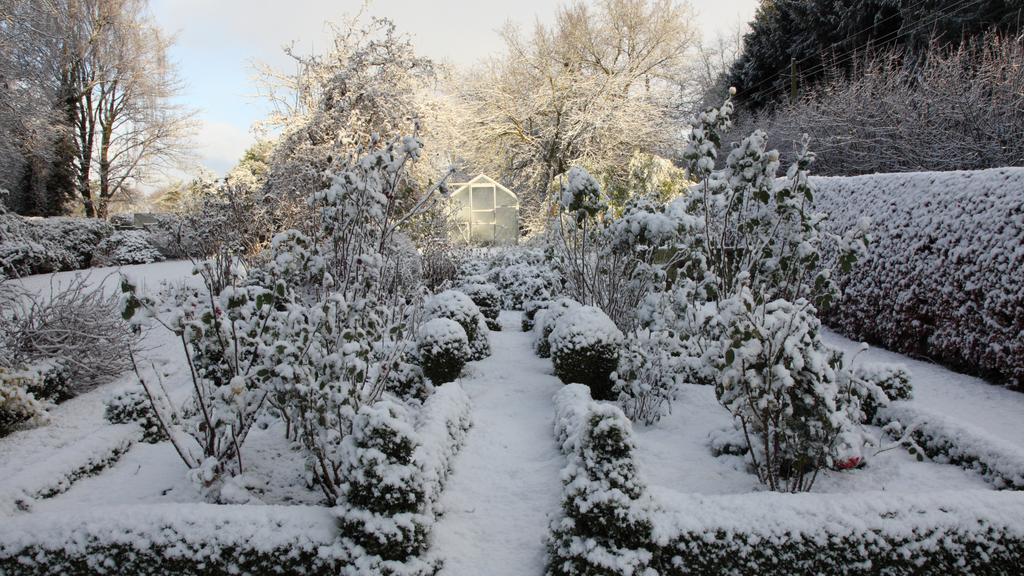
Weather Changes in the UK and The Impact on Planting

Before we dive into the impact of weather changes in the UK on gardens, let's first take a moment to acknowledge the huge changes happening in our climate. We all know that our planet is undergoing drastic transformations, and the UK is not an exception. Our weather patterns are altering, and these changes have prompted concerns about how they will affect our lives and our environment. Weather Changes in the UK and Their Impact on Planting: Climate change in the UK: The UK has experienced a 0.8°C increase in average temperatures over the last century. The increase in temperature is due to the rise in greenhouse gas emissions, specifically CO2, methane, and nitrous oxide. This means we can expect hotter summers, warmer winters, and more extreme weather conditions in the future. Effects of weather changes on gardening: As gardening is heavily dependent on weather patterns, changes in weather can significantly impact the growth and development of plants. The increase in temperature, for instance, can cause droughts, leading to soil dryness and reduced crop yields. Extreme heat may also cause root damage, leading to slow development. On the other hand, extreme rainfall can trigger soil erosion and flooding, leading to soil degradation and plant damage. Adapting to weather changes: Adapting to weather changes is crucial, as it allows gardeners to maintain optimal plant growth, even in changing conditions. One effective way to cope with the changes is to grow plants that are adaptable to varying weather conditions. This is particularly important given the unpredictability of our weather patterns. By selecting plants that are resistant to some of the challenges we face, we can maintain a beautiful garden even when the environment is hostile. Wrapping it up: Gardening is an excellent way to interact with nature. However, maintaining a garden in a changing climate can be challenging. By preparing for the effects of climate change on gardening, we can ensure a continuous supply of healthy plants that will undoubtedly make our gardens a haven for beauty and tranquillity.
Top Weather Changes in the UK to Consider in Your Garden
With the changing climate in the UK, gardening has become more challenging than ever before. Planting in your garden requires careful consideration of weather changes to ensure proper growth. Here are some of the top weather changes in the UK to consider when planning your garden: Milder winters mean that plants are less likely to freeze and die, but it also means that some plants may be confused about when to bloom. Wetter autumns and springs can lead to waterlogged soil and increased risk of diseases such as mildew, but it can also mean an extended growing season for some crops. Drier summers can lead to drought stress for some plants, while other plants thrive in hot, dry conditions. Finally, extremes of weather, including heatwaves and heavy rain, can damage crops and leave gardeners scrambling to protect their plants. So, what can you do to prepare and adapt to these weather changes? Start by choosing plants that are adapted to your local climate and weather conditions. Consider installing rain barrels or a drip irrigation system to help manage water and avoid water-logging. Incorporate mulch into your soil to help retain moisture and protect from extreme temperature fluctuations. And don't forget to keep an eye on the weather forecast and adjust your planting and maintenance schedules accordingly. By staying informed and flexible, you can still enjoy a thriving garden in the face of changing weather patterns. Don't let the weather get in the way of your gardening dreams!
How Weather Changes Affect Plant Growth
Gardening can be challenging, especially with the unpredictable weather changes in the UK. The impact of weather changes on plant growth cannot be underestimated. Changes in temperature and rainfall can make it difficult for plants to thrive. The impact on soil and nutrients is one of the major issues that gardeners face. Waterlogged soil can lead to poor drainage, which is bad for many plants. Soil erosion can also occur during heavy rainfall, which will require more nutrients to maintain healthy soil. Adjusting to temperature fluctuations can also be a challenge. Hot, dry summers can lead to water stress in plants, while cold, wet winters can cause fungal diseases. Adapting to changes in rainfall is essential, and gardeners should be prepared to adjust their watering routines, especially during dry spells. To adapt to these weather changes, gardeners should carefully select plants that can thrive in their climate. They should use sustainable practices such as mulching, composting, and using organic fertilisers. Building raised beds can help with drainage, while drip irrigation can be an efficient way to water plants. Designing a garden to adapt to changing weather patterns can also be useful. For example, planting windbreaks can help protect plants from harsh winds, while creating shaded areas can help cool plants during hot summers. In summary, adapting to weather changes is essential for the successful cultivation of plants in the UK. Gardeners should be prepared to adjust to changing conditions, selecting the right plants, using sustainable practices, and designing their gardens to adapt to changing weather patterns. Remember, your garden can be an oasis of beauty and productivity no matter what curveballs the weather may throw your way.
Tips for Planting and Maintaining Your Garden in Changing Conditions
When it comes to planting in changing weather conditions, there are a few tips and tricks to keep in mind to make your garden thrive regardless of what Mother Nature throws your way. Firstly, choosing the right plants for your climate is essential. Some plants thrive in hot, dry conditions, while others prefer damp and cool climates. Do your research and choose plants that are naturally hardy and adaptable to changing conditions. Secondly, when it comes to watering and fertilising your garden, it's important to be strategic. Watering deeply but less frequently can help train the roots of your plants to search for water deeper in the soil, leading to stronger and more drought-resistant plants. Additionally, using organic fertilisers can help prevent runoff and keep your soil healthy and nutrient-rich for your plants to grow. Thirdly, designing a garden to adapt to changing weather can be a fun and creative challenge. Consider incorporating raised garden beds or utilising container gardening, which can be moved to sunnier or shadier spots depending on the seasons. Additionally, incorporating native plants into your garden can help support local ecosystems and ensure that your garden is naturally suited to thrive in your area's unique climate. Finally, efficient use of resources is essential when it comes to gardening sustainably. Collecting rainwater in barrels can help ensure that your garden has water even during droughts, while composting yard and food waste can create nutrient-rich soil for your plants without producing extra landfill waste. By following these simple tips, you can design a garden that is both beautiful and sustainable, no matter what weather changes come your way.
The Future of Gardening in a Changing Climate
As climate change is becoming increasingly significant, gardeners need to be aware of the potential challenges this could pose to gardening in the future. Predictions for climate change in the UK suggest that we will see an increase in temperature, particularly during the summer months. This could make gardening more difficult due to the soil drying out and the need for additional watering. However, gardeners can adapt to this by ensuring they plant appropriate species, choosing crops that are tolerant to hotter temperatures. Sustainability also needs to become an increasingly important part of gardening in the future. There is a need to move away from commercial and mass agriculture to more sustainable models, and so gardeners need to consider composting, water conservation and choosing plants that require less resources to grow. In addition, gardeners may also need to consider the use of alternative energy sources, such as solar power, to reduce their carbon footprint. In conclusion, while there is no doubt that climate change will have an impact on gardening, there are steps that gardeners can take to adapt to these changes and continue growing plants successfully. By using sustainable practices and being aware of the specific challenges related to climate change, gardeners can create a beautiful and thriving garden, even in changing conditions.
Conclusion
We have a responsibility to adjust to the changing weather conditions when it comes to planting in our gardens. Choosing the right plants, efficient resource use, and sustainability are essential practices to ensure the longevity of our gardens in a changing climate. Based on predictions for climate change in the UK, it's important to start adopting these practices in our gardens now to mitigate the potential damage in the future. Let's take small steps today for a better tomorrow!







